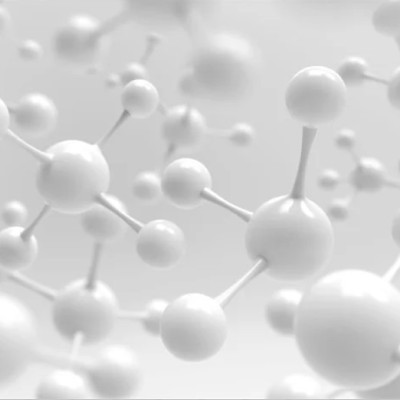
2022-08-29
Visited : 848
In a recent study published in Nature Nanotechnology, researchers explored how effectively nanotechnology-based novel and potential vaccines, drugs, and monoclonal antibodies (mAbs) could combat the current and yet to emerge severe acute respiratory syndrome coronavirus 2 (SARS-CoV-2) variants.
Background
Nanotechnology-based messenger ribonucleic acid (mRNA) vaccines have remarkably combated SARS-CoV-2 so far; however, the emerging SARS-CoV-2 variants call for new strategies to compensate for the loss of mRNA vaccine efficacy against them.
Omicron, for instance, has severely reduced the function of the neutralizing antibodies (nAbs) with less than 3% mutations in its spike (S) protein. mRNA vaccine manufacturing companies have started to consider developing Omicron-specific vaccines.
Nanotechnology-based vaccines, drugs, and antibodies
Anti-inflammatory drugs (e.g., dexamethasone) and broad-spectrum antiviral drugs remain promising for treating coronavirus disease 2019 (COVID-19) and reducing morbidity and mortality. For instance, some NPs primarily accrue in macrophages, raising the possibility of targeting dexamethasone to the immune cells, which, in turn, could suppress the abnormal hyper-inflammatory responses related to COVID-19.
Not only nanoparticles (NPs) have shown promise as drug delivery, but formulated nanomedicines might achieve passive and active SARS-CoV-2 targeting, prolong drug circulation time and reduce side effects.
In addition, NP-enabled nucleic acid drugs could be co-loaded with broad-spectrum antivirals in one nanosystem. An intervention strategy that integrates various therapeutic modalities into one nanosystem could further improve the effectiveness of NP-based rugs against SARS-CoV-2 and its variants. Notably, these drugs interfere with pro-inflammatory signaling or viral replication to combat COVID-19.
NP-based vaccines, especially mRNA-liquid nanoparticle (LNP) vaccines, have several advantages, including modularity and high efficacy; additionally, they can be rapidly manufactured at a mass scale. Consequently, Moderna completed the phase I clinical trial of an LNP-based COVID-19 vaccine mRNA-1273 in only 63 days following sequence selection.
Since receptor-binding domain (RBD) antibodies have the potential to cross-neutralize SARS-CoV, SARS-CoV-2, and bat coronaviruses, RBD-based vaccines may also elicit cross-nAbs against SARS-CoV-2 and its variants. An RBD-24-mer NP vaccine was developed by attaching 24 sortase A-tagged RBDs to the surface of ferritin. The immunization of macaques with RBD-24-mer NP vaccines induced high titers of nAbs against neutralization-resistant SARS-CoV-2 variants, including Alpha, Beta, and Gamma.
Likewise, the researchers designed an RBD-20-mer NP vaccine consisting of 20 SARS-CoV-2 RBD subunits using a computationally designed self-assembling NP. This NP-based vaccine could induce nAbs targeting human immunodeficiency virus (HIV) and vesicular stomatitis virus (VSV) pseudotyped SARS-CoV-2 variants in non-human primates.
Higher efficacy and short manufacturing time would be crucial for the next-generation COVID-19 vaccines adapted to SARS-CoV-2 variants. Hence, NP-based vaccines hold great potential due to their original high efficacy and convenience in upgrading potential to prove efficacy compared to currently used COVID-19 vaccines.
Since some lab-engineered monomeric nAbs that neutralize SARS-CoV-2 fail to neutralize some of its variants. Future research efforts should develop multivalent antibody nanoplatforms to promote the neutralizing activity of monomeric nAbs against those SARS-CoV-2 variants. Studies have shown that these nanobodies neutralize the SARS-CoV-2 variants through multiple mechanisms. For instance, class I nanobodies target angiotensin-converting enzyme 2 (ACE2) binding sites. Class II nanobodies bind to the highly conserved epitopes of the S protein, thus, retaining potent activity against most variants.
Most intriguingly, class III nanobodies recognize unique epitopes usually inaccessible to conventional antibodies. It is even possible to improve the overall efficacy of all three classes of nanobodies. Such multivalent antibody nanoplatforms would have the potential to simultaneously bind to different S protein sites, thus, effectively targeting all SARS-CoV-2 variants. In this context, the development of ACE2-based nanodecoys also holds great potential to become a universal platform for all SARS-CoV-2 variants since all have a high binding affinity to the ACE2 receptors regardless of their continuing mutations.
Further, the development of angiotensin-converting enzyme 2 (ACE2)-based nanodecoys holds great potential to become a universal platform for all SARS-CoV-2 variants since all have a high binding affinity to the ACE2 receptors regardless of their continuing mutations. Furthermore, a broad range of nanostructures (e.g., DNA origami) that directly combat SARS-CoV-2 variants or display ACE2 receptors or nAbs on their surfaces could be adapted to prepare novel NP-based treatment strategies to combat SARS-CoV-2 variants.
Conclusion
Due to the rapid dissemination of SARS-CoV-2 variants globally, the advancements and innovations in the field of nanotechnology could provide diverse approaches to accelerate the end of the pandemic. The NP-based design strategies developed for SARS-CoV-2 could also instigate innovation in developing nanotechnology-based strategies for handling other future infectious pathogens and their variants.
Read the original article on News Medical.